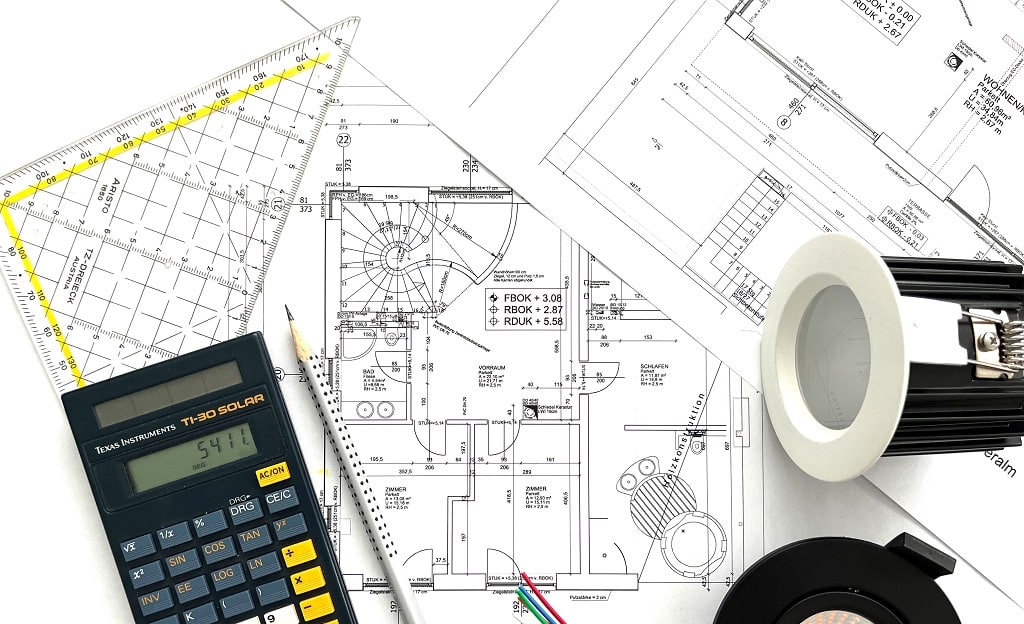Indirect lighting: what can you expect in the article
This comprehensive guest article by Rouven Buschauer (lighting designer and lighting planner) covers all the key areas relating to indirect lighting.
From basic knowledge to various technologies and techniques to specific tips and ideas from professionals, everything is included. You will also find numerous other explanations and free assistance such as lighting design tutorials, online calculation tools and seminars to help you design indirect lighting!
We wish you informative entertainment and look forward to any comments!
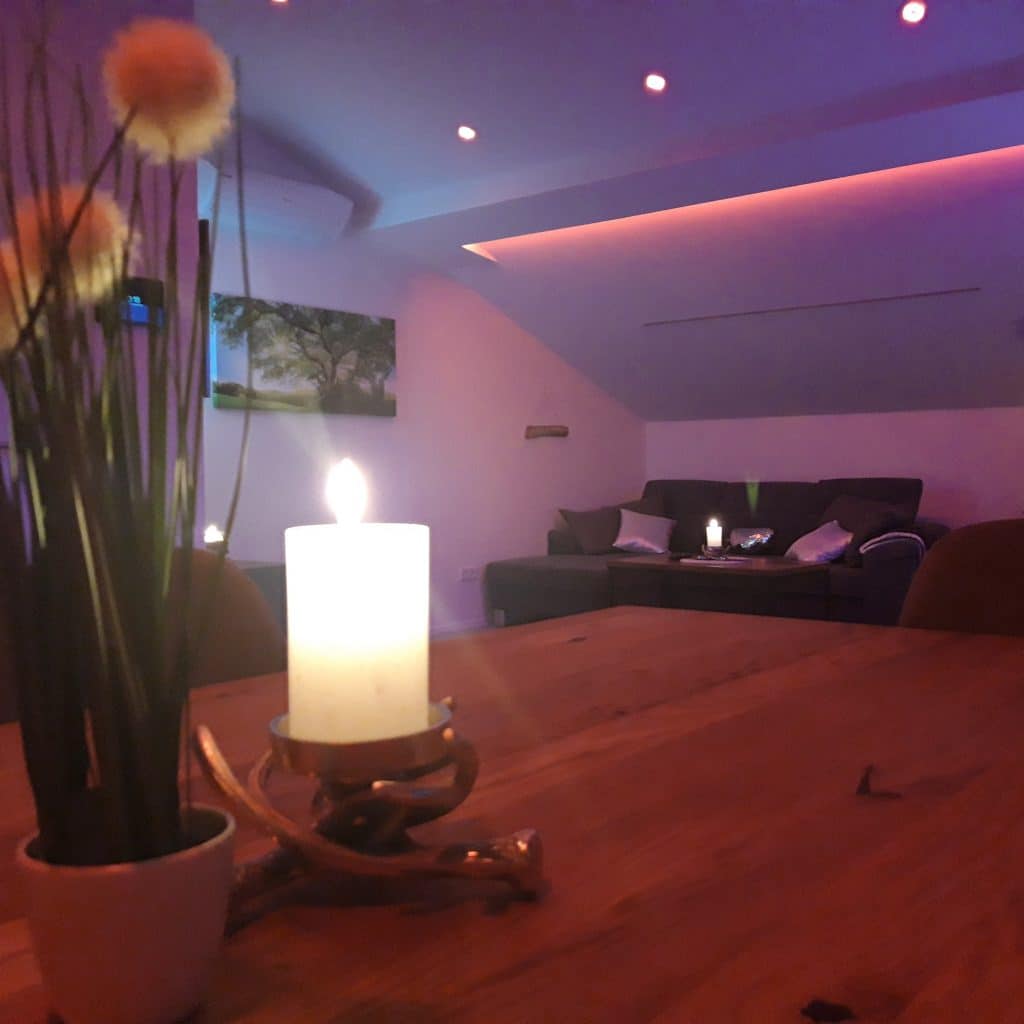
What is indirect lighting?
Indirect light is one of the most popular methods of creating a pleasant and harmonious atmosphere in living spaces. Instead of shining the light directly into the room, it is reflected via walls, ceilings or other surfaces.
The result is a diffuse, soft light that illuminates the room evenly without causing glare. In living rooms in particular, this technique creates a relaxing lighting atmosphere and can be flexibly adapted to different room designs.
The most commonly used form is indirect ceiling lighting. What is often forgotten is the effect of indirect wall lighting. With simple means such as LED wall luminaires, unique and relaxing lighting moods can be created!
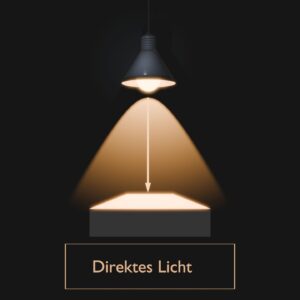
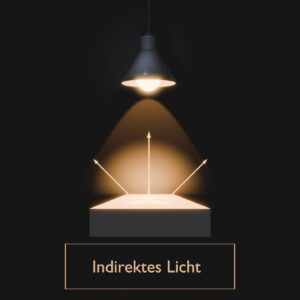
Indirect lighting with LEDs (light-emitting diodes)
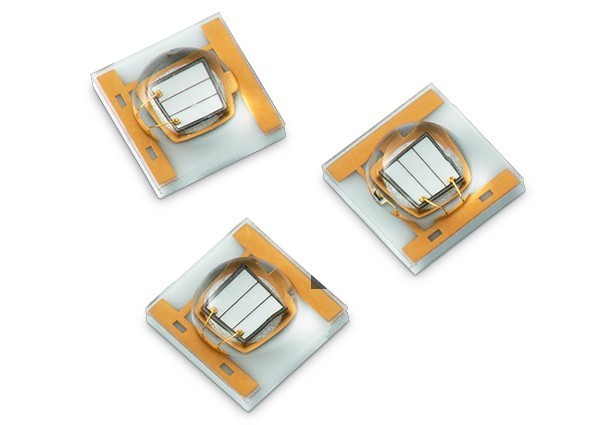
Light-emitting diodes (LEDs) have established themselves as the optimum light source for indirect lighting. Their longevity coupled with maximum energy efficiency make them economical and their small size enables an unimagined variety of designs for LED lights and lamps. Added to this is their versatility in terms of light colors and intensities.
The extremely popular LED strips are dimmable and offer additional functions on request. They are therefore ideal for flexible lighting and adapt the lighting mood to different times of day and needs.
This is particularly practical in multifunctional living areas where the lighting needs to adapt to different activities and moods.
monochrome white, tuneable white or RGBW?
It’s not just the indirect lighting design that offers a wide range of design options! The light color gives you additional alternatives to customize your home!
In addition to the choice of classic monochrome white tones, there is also tuneable white technology, with which the color temperature can be flexibly adjusted from warm to neutral to daylight white. Tuneable white is particularly popular in multifunctional living areas, as the lighting adapts to different activities and moods. You can find out more about the effect of white tones and recommendations in our knowledge article on color temperature.
RGBW technology (red, green, blue and white), on the other hand, opens up other possibilities in lighting. In addition to functional white light, colored accents can also be set here. Unique lighting scenes can be created here, especially in combination with direct lighting using LED spotlights. Ask your lighting designer for advice and create a unique atmosphere.

preset, single-color white light that cannot be changed. A cozy warm white is usually chosen and is therefore perfect for homogeneous ambient lighting.

In addition to brightness, the light color can also be changed (hue of white light) and individually adjusted. Extremely popular as basic lighting for living rooms and bedrooms used for different purposes.

Unique colors for accentuating living spaces in static or dynamic lighting scenes. RGBW is preferably used as an additional design element to basic lighting.
Techniques for indirect ceiling lighting
There are various techniques for creating indirect ceiling lighting in a room. Two of the most commonly used methods are central suspension and continuous cove lighting.
With central suspension, the indirect lighting element is positioned centrally in the room and shines towards the ceiling, where it is reflected. This technique is particularly suitable for rooms with high ceilings, as the light is optimally distributed and the room is visually enlarged.
The all-round cove, on the other hand, gives the room a luxurious ambience. Here, the light is placed along the walls and emitted gently towards the ceiling. This technique not only emphasizes architectural details, but also makes the room appear more elegant.
6 professional tips for a modern home
Careful planning and the selection of suitable components are essential to exploit the full potential of indirect lighting. Here are six professional tips to help with this lighting technology:
1. uniform light distribution
A major advantage of indirect lighting is the uniform light distribution, which avoids harsh shadows and glare. By reflecting the light onto bright or white walls and ceilings, a greatly enlarged light source is created and so-called soft light is generated. This creates a calm, relaxed atmosphere, particularly in living rooms and bedrooms.
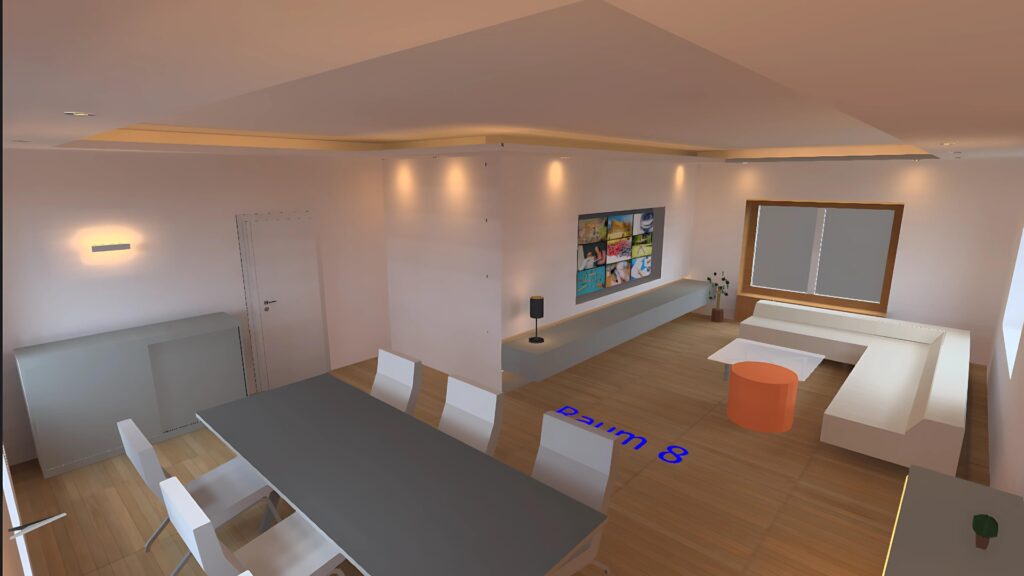
Professional tip:
High-quality LED luminaires and LED strips make a decisive contribution to flicker-free and uniform lighting. It is particularly important to ensure sufficient reflective surfaces.
Example living room:
Indirect lighting with LED strips can be installed on the ceiling in the living room for this purpose. This gently illuminates the room and creates a cozy atmosphere.
2. dimmer and smart lighting control
As already explained above, indirect lighting offers a high degree of flexibility, as both the light intensity and, if required, the color can be adjusted to different moods. So-called PWM dimmers are installed for this purpose, which in turn are controlled via a smart home.
This allows the lighting to be adapted to your needs at any time. Bright and activating in the morning, dimmed and calming in the evening.
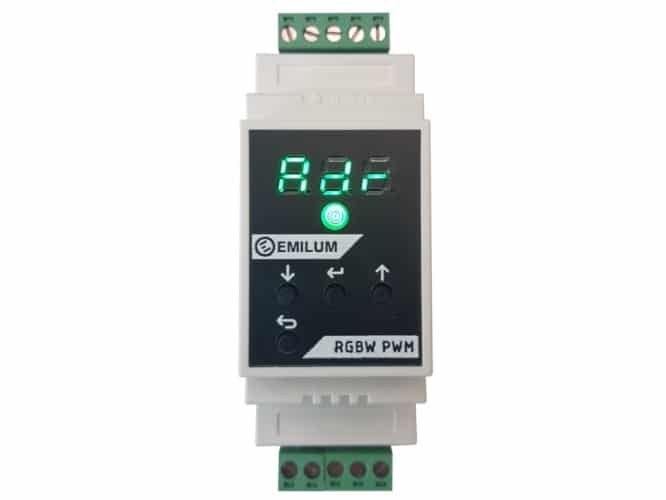
Pro tip:
DimmableLED strips or LED luminaires enable precise control of the light intensity. Smart systems can be operated via app or voice control.
Application:
For a relaxed evening with friends, the lighting can be set bright and dynamic at the beginning and dimmed later to create a cozy atmosphere.
3. integration into the room design
Indirect light sources can be discreetly integrated into the room architecture.
To ensure that the focus is on the effect of the light, it is important that the technical components are concealed.
This includes the cables, power supply units (Knowledge article: How to find the right power supply unit for LED strips), dimmers, but also the lighting elements (LED strips etc.) themselves.
Only the tidy and minimalist appearance really brings out the best in indirect lighting!
Bedroom example:
In a modern bedroom, indirect lighting can be installed behind the bed to gently and atmospherically illuminate the room.
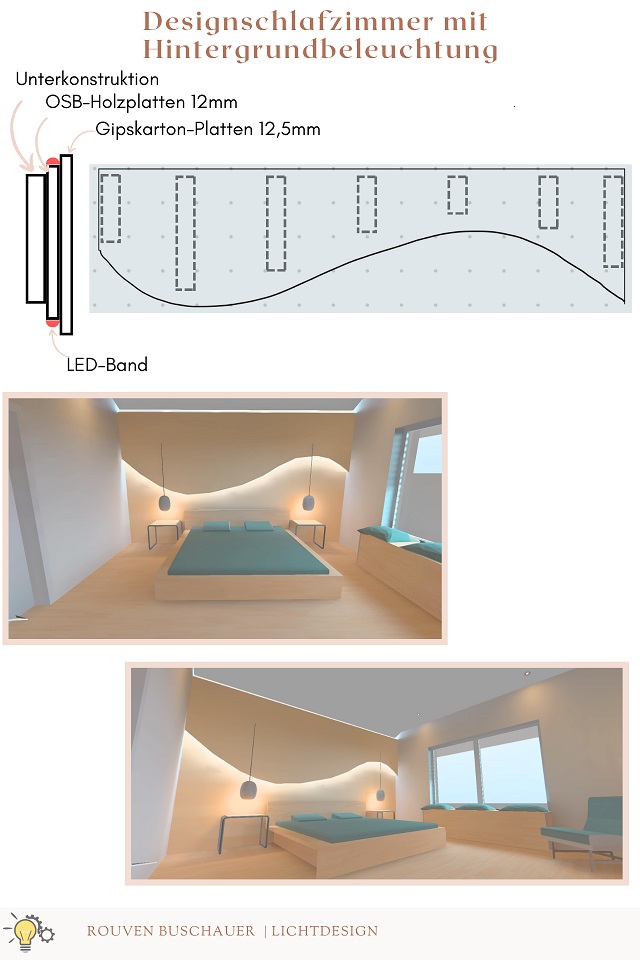
4. careful planning
The positioning of the light sources is a key aspect in achieving the desired lighting effect.
When planning, particular attention should be paid to ensuring that sufficient reflective surfaces are available. This avoids both darker areas and glare.
When planning, the luminous flux required for the entire room must also be taken into account! Indirect lighting in particular requires good lighting design due to the complexity of the lighting technology.
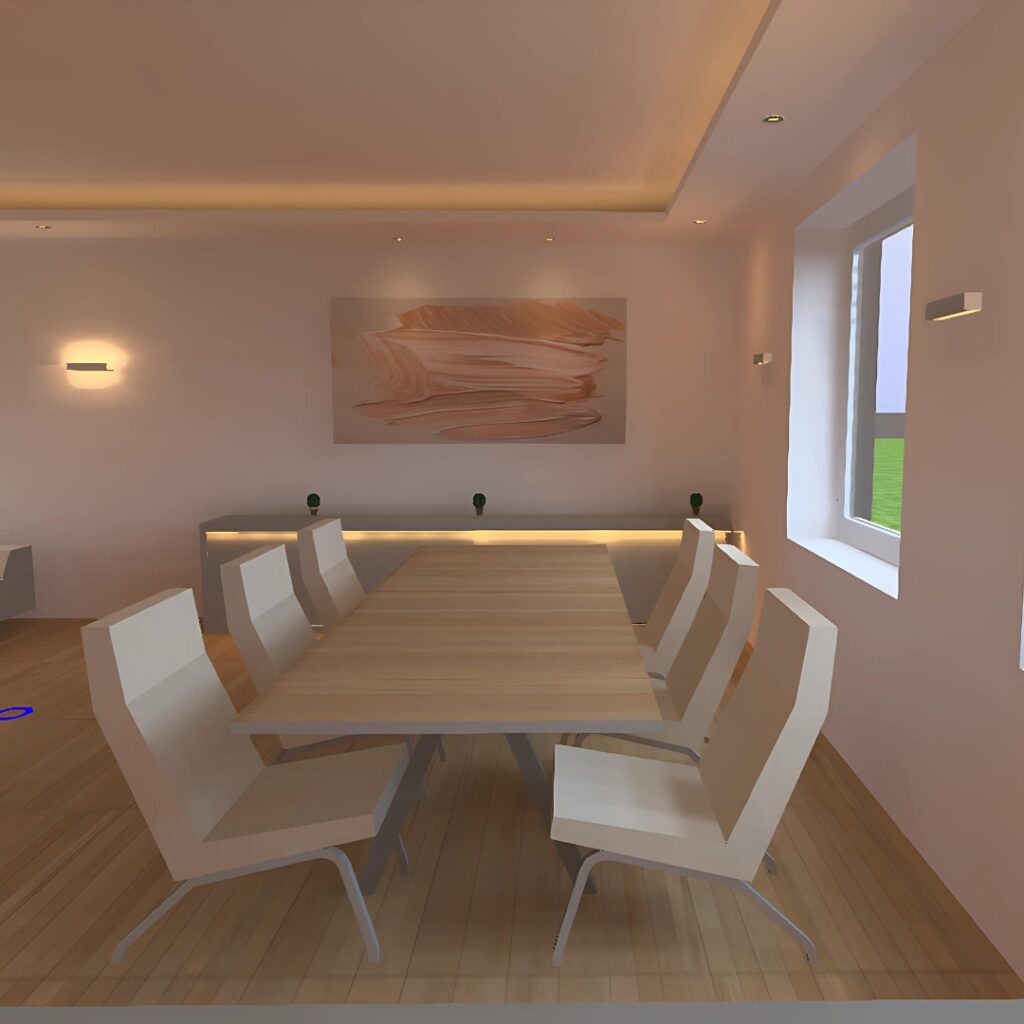
Tip from Rouven Buschauer:
Make sure that the light sources are positioned at an optimum distance from the reflective surfaces to ensure even light diffusion. The positioning should be adapted to the room size and height.
Explanation:
Too small a distance leads to glare; if the distance is too large, the light is “lost” in the room. If the wrong LED strips are also selected, they have to be replaced afterwards, in the worst case including power supply unit and additional dimmer.
5. which LED strip for indirect lighting?
The combination of LED strips and aluminum profiles plays a decisive role in the diffusion of light.
With the former, a rough distinction is made between classic LED strips and so-called COB strips. The main advantage(LED strips without light points) is not relevant for indirect lighting (the light source is not visible), but there is another option with the different beam angle.
With classic strips, this is 120°, with COB up to 180° are possible. Depending on the aluminum profile, alignment and structure, one or the other variant is more suitable. Pay attention to the subtleties when mounting the Stripes. Here we recommend you take a look at our tutorial on the topic: Gluing LED strips
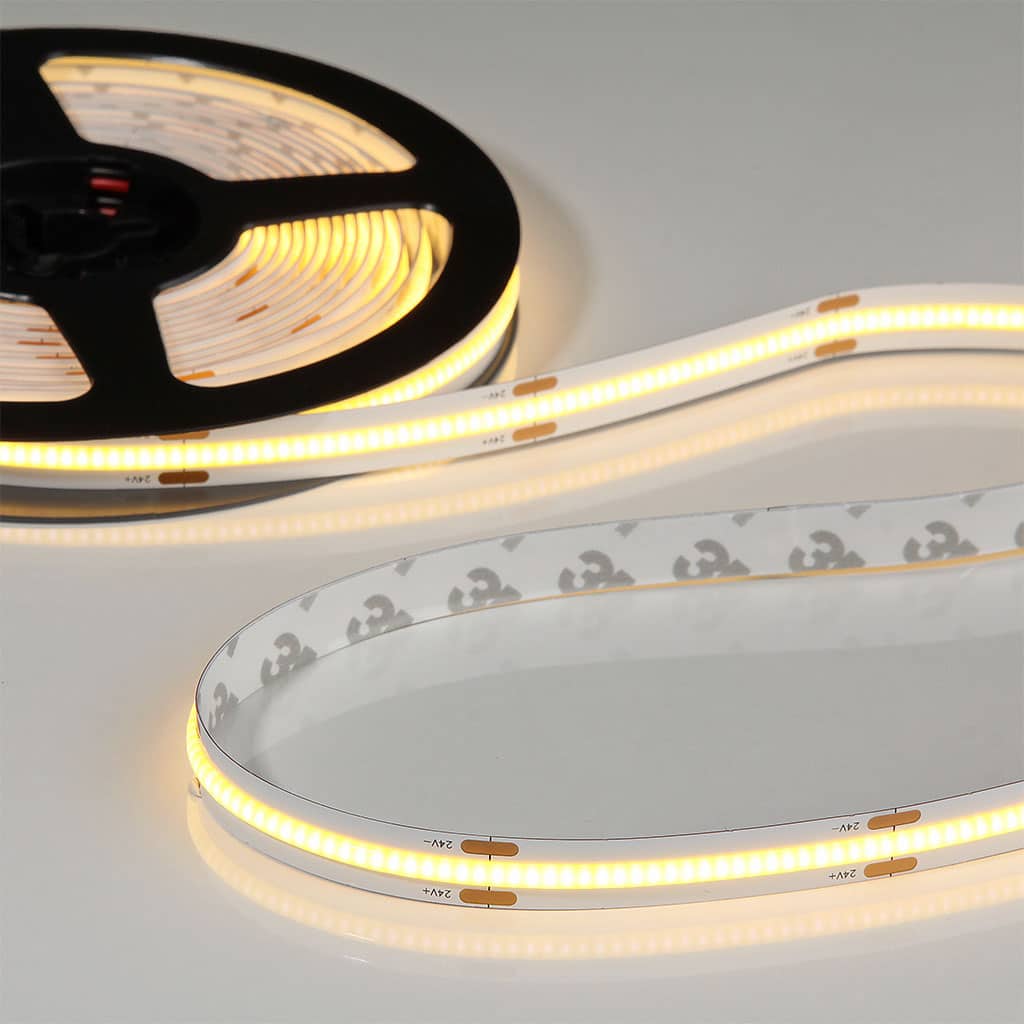
Tip from the lighting designer:
Choose LED profiles that diffuse the light at an even angle and avoid glare. They make a significant contribution to the aesthetic and functional effect of the lighting.
Example:
For LED strips that are parallel to the wall, COB strips are often the right choice due to the larger beam angle! However, if the distance to the reflective surface is too great, classic strips are the better choice!
6 Hidden technology and power supply
To ensure that the technology does not detract from the appearance, the power supply and control should be planned at an early stage.
Power supply units, cables and switches are planned before implementation so that there are no nasty surprises during implementation. You are then forced to choose only the 2nd best solution and parts of the technology can often not be elegantly concealed.
As the saying goes? The best technology is the one you can’t see.
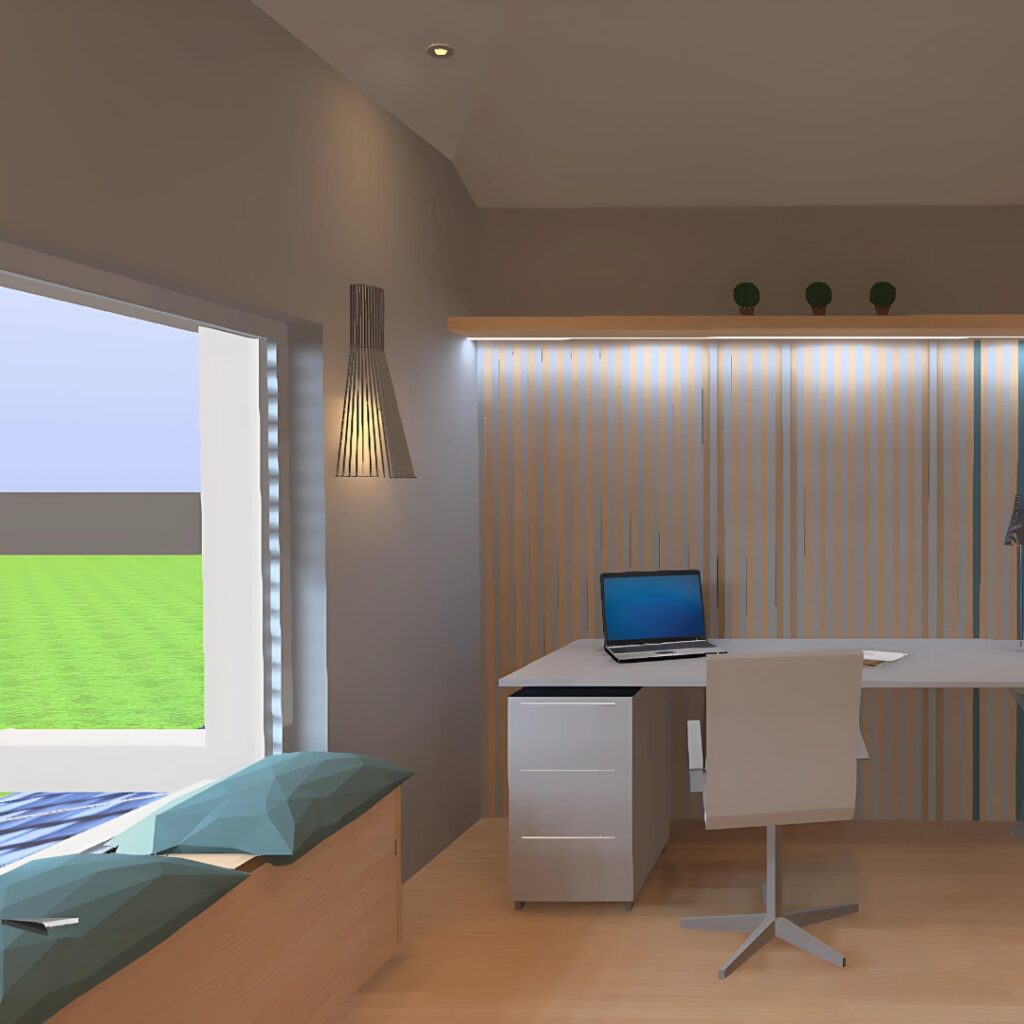
Practical tip:
Ideally, the power supply units and dimmers are located in the control cabinet. Otherwise, coving, suspended ceilings, cladding and furniture are a good alternative
- Indirect lighting creates particularly pleasant, soft and glare-free light
- LED strips, wall lights, ceiling washlights and LED spotlights are ideally suited
- Indirect lighting is much more than just light! It creates atmosphere, supports the biorhythm, is extremely flexible and has that special something.
- Good lighting planning is the be-all and end-all of indirect lighting
Summary
Indirect lighting offers versatile design options and numerous advantages that go beyond simple LED strips. With careful planning and the right choice of components, a modern, elegant and functional lighting concept can be created that is not only visually appealing, but also significantly improves the quality of life.
The author: Rouven Buschauer
Rouven Buschauer is an experienced lighting designer who supports building owners with customized lighting and electrical concepts.
He develops innovative solutions that create an atmospheric ambience and offer intuitive electrical planning. His detailed plans facilitate smooth implementation on the construction site and ensure that aesthetics and functionality are harmoniously combined.
Thanks to his extensive experience, he also offers remote concepts that make it possible to implement inviting and future-proof lighting design from any location. In this way, Rouven Buschauer transforms living spaces into genuine oases of well-being that enrich everyday life.
Visit Mr. Rouven Buschauer directly on his homepage and find out more about other aspects of lighting design!
free seminar:
The lighting concept with WOW effect takes place in a unique format. Emilum fully recommends the seminar!
Free eBook:
You can find everything you need to know about lighting design, processes and costs in this eBook by Rouven Buschauer!
Configurator for indirect lighting
Our popular, free lighting and electrical calculator is currently being expanded to include a configurator for indirect lighting. With just a few simple clicks, you can get a feel for the components you need and find answers to the following questions:
- How many lumens for indirect lighting?
- Which LED strip for indirect lighting?
- How many watts for indirect lighting?
Our lighting design tool also offers many other interesting and helpful tools: Calculate number of spots, take voltage drop into account, cable cross-section calculator, and much more.
The right products for direct and indirect lighting
You will find the right products for both direct and indirect lighting in our online store. Our extensive range includes a wide variety of 24V LED spotlights, 24V LED strips, LED lights and much more. .
Many more guides, tutorials and more
If you are further interested in lighting and smart homes, we recommend our service area. There you will find numerous other informative articles (e.g. converting lumens to watts, light units, …), extensive tutorials & help with questions (e.g. 10 tips for selecting LED spots, the light emitting diode, …), free tools(online light planner) and much more:
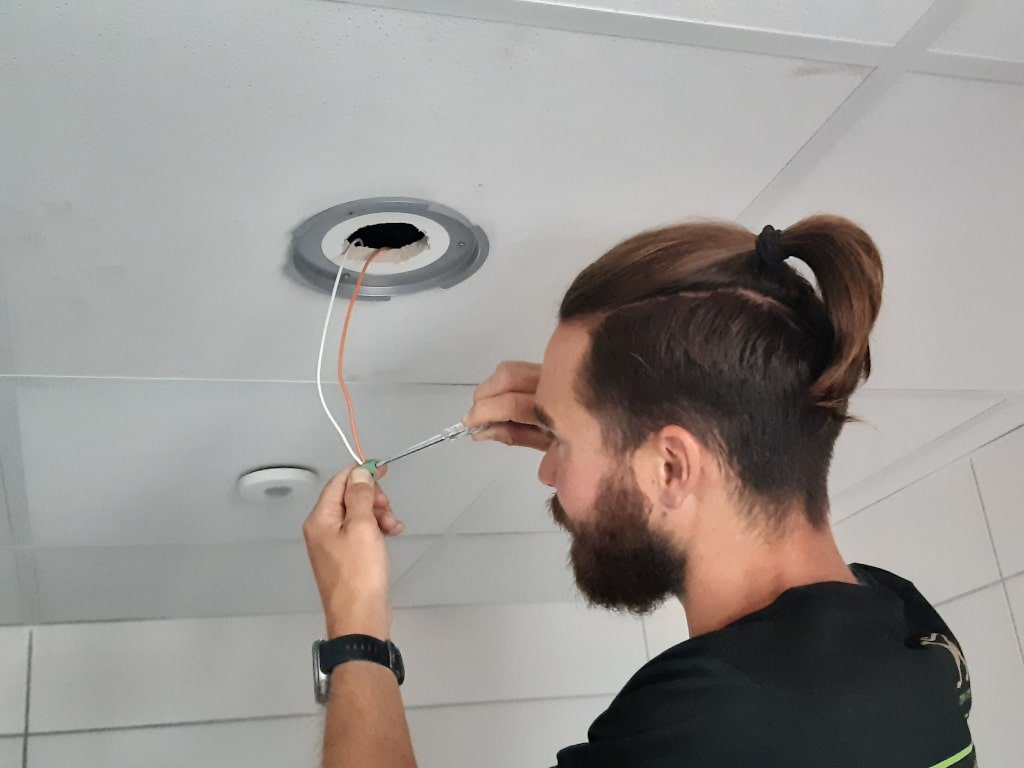
popular posts on our blog:
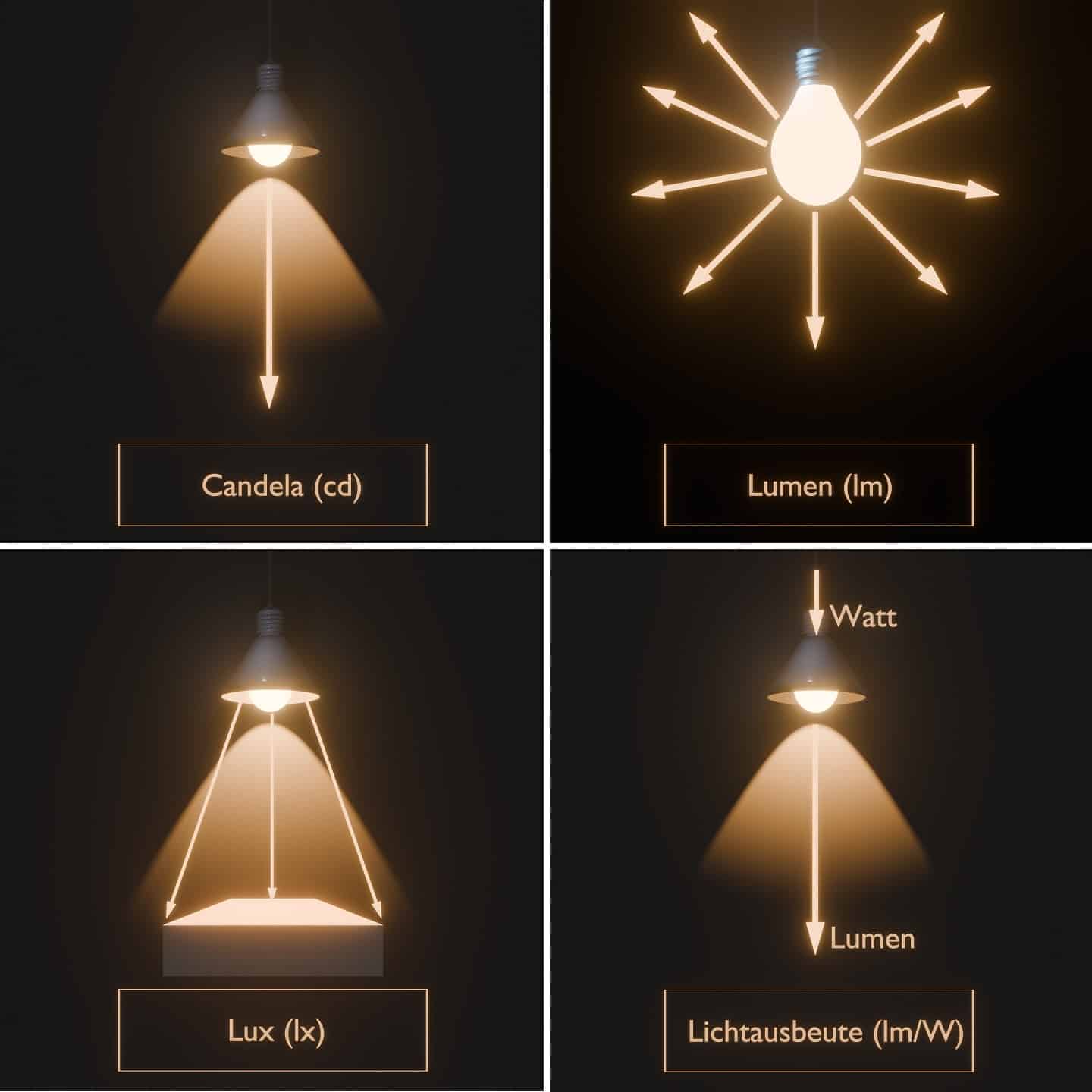
Unsure about terms such as luminous flux, illuminance and luminous efficacy? No problem, this article supports you with simple graphics.
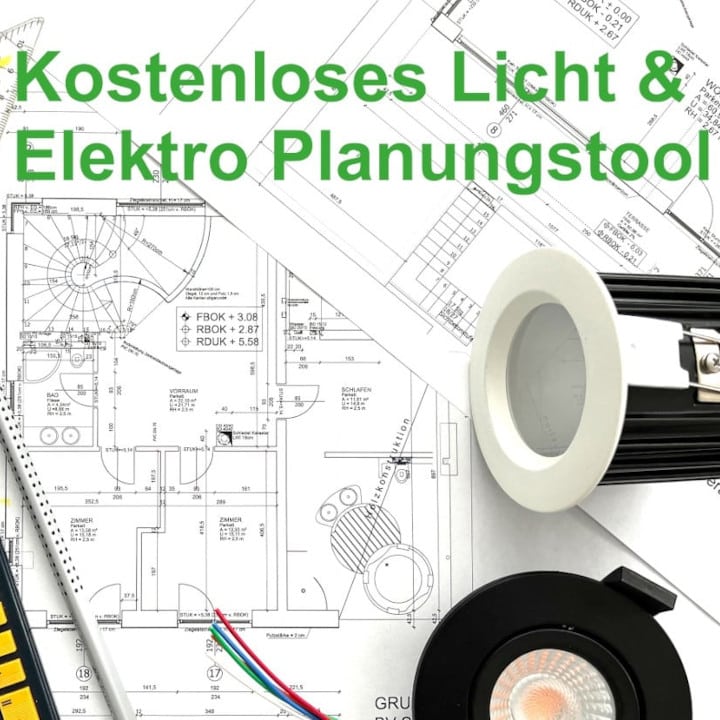
Everything needed for light calculation is combined in one tool: determine number of spots, voltage drop calculator, power calculation, and much more.
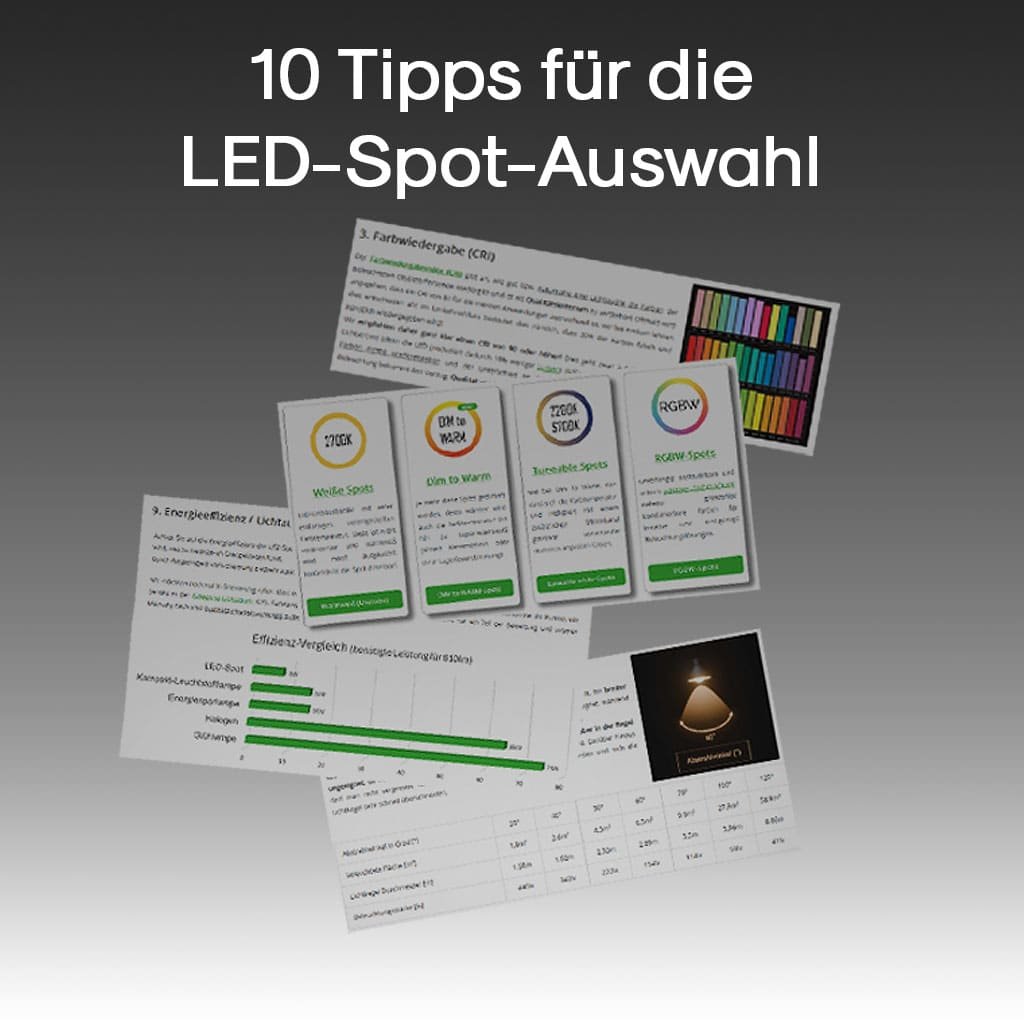
What are the really important parameters for LED spotlights and what can be safely dispensed with? Hard facts instead of marketing values!


